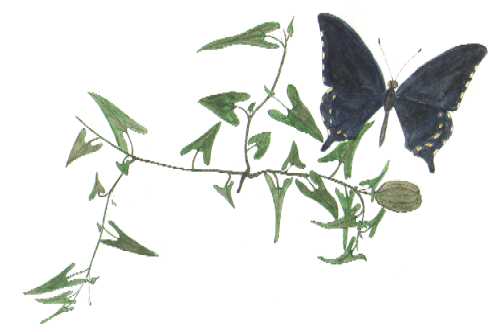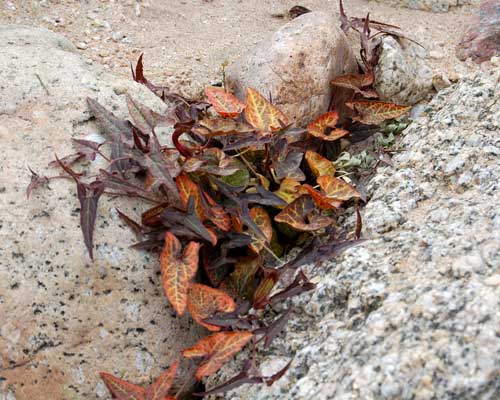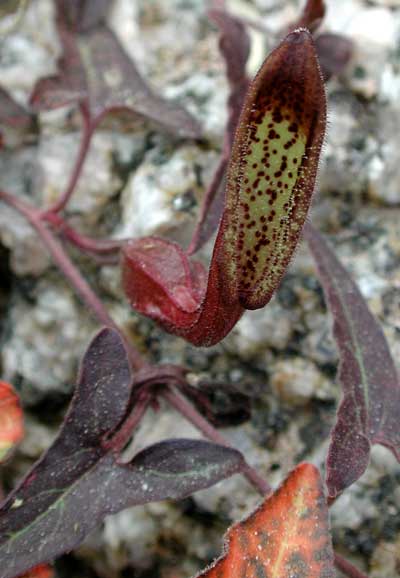Indian Root
Dutchman's Pipevine
Aristolochia watsonii

This image was created from an original water color painting. At upper right is the irridescent, blue-black, Pipevine Swallowtail (Bates philenor). Just below the butterfly is a mature fruit.
Sponsored Links:

This beautiful example was found growing from a boulder crevice along Mesquite Wash, Maricopa Co., Arizona in April 2008.
PERENNIAL HERB: Grows more-or-less as a vine, almost prostrate on the
ground, with only the root and crown woody.
LEAVES: Dark red to green, distinctly arrow-shaped (sagitate).
FRUIT: Cylindrical to globose, 5-ribbed capsule.
FLOWERS: Peculiar structure but inconspicuous; a greenish red bract or
spathe surrounds the actual flower which is very small. The odor and aroma of
the flower suggests a 'mouse ear' (or so I'm told since I've never sniffed a
mouse's ear) and thus represents an unusual relationship with a fly (a biting
midge, Ceratopogonidae) as pollinator: the midge visits the flower for a blood
meal, gets none and instead pollinates another flower the next time it falls
for this ruse.

RANGE : Regular above 700 m elevation and occasionally lower where it
grows in the shade of wash bank trees. Found throughout most of southern
Arizona and Sonora, Mexico.
UNARMED: No spines or throns, but should be considered toxic.
This plant is sometimes quite obscure and it can take a dedicated plant-searcher to find it. Its presence, however, is often revealed by the presence of the large and conspicuous butterfly, the Pipevine Swallowtail. This insect matures from a caterpillar that only feeds on Aristolochia and so seeing the butterfly tells the experienced naturalist that the plant is likely nearby as well. The conspicuous caterpillar, which is red with fleshy tubercles, frequently eats the above ground portion down to the ground further making discovery of the plant difficult.
Aristolochiaceae
More Information:
- E-Flora
- USDA Plant Profile
- ITIS Taxonomic Report
- Firefly Forest Tucson
- Google Images
- Google Scholar Literature Search